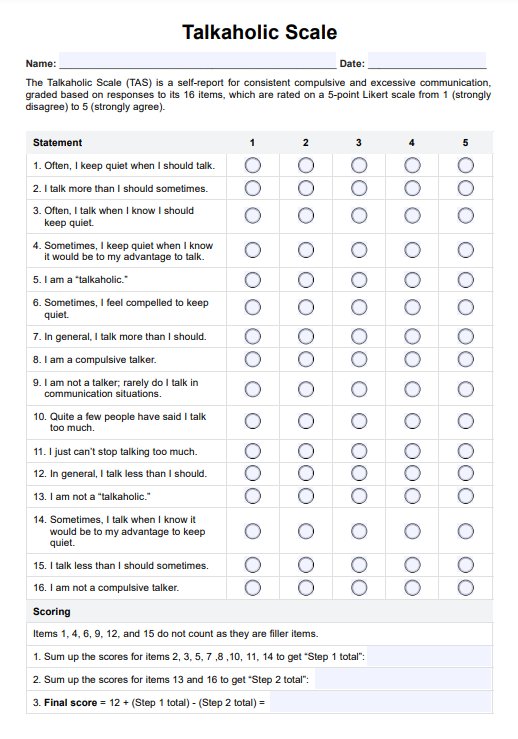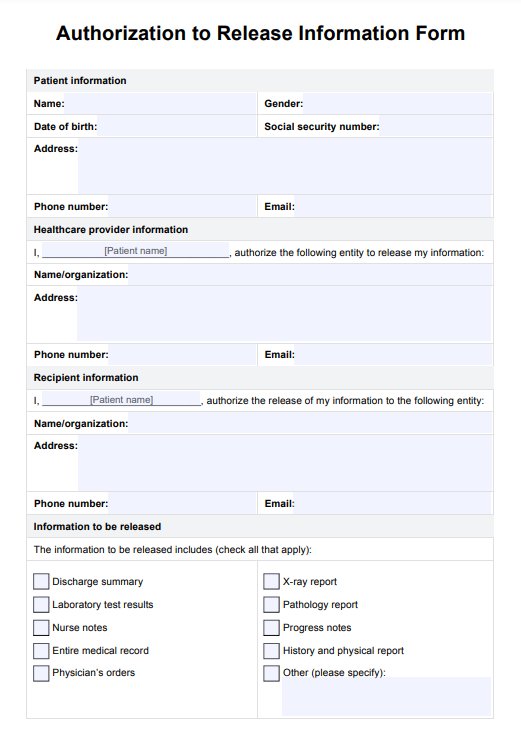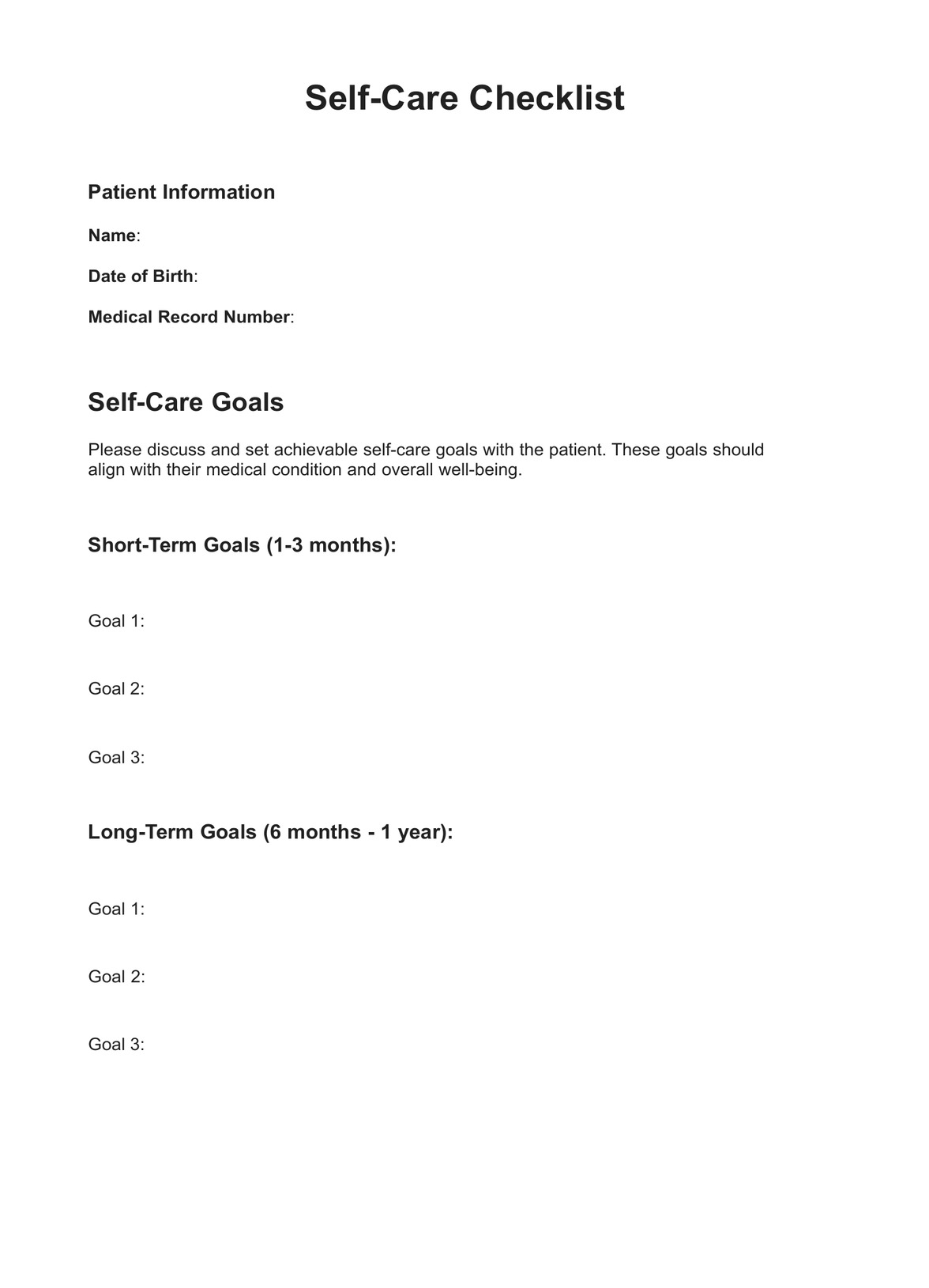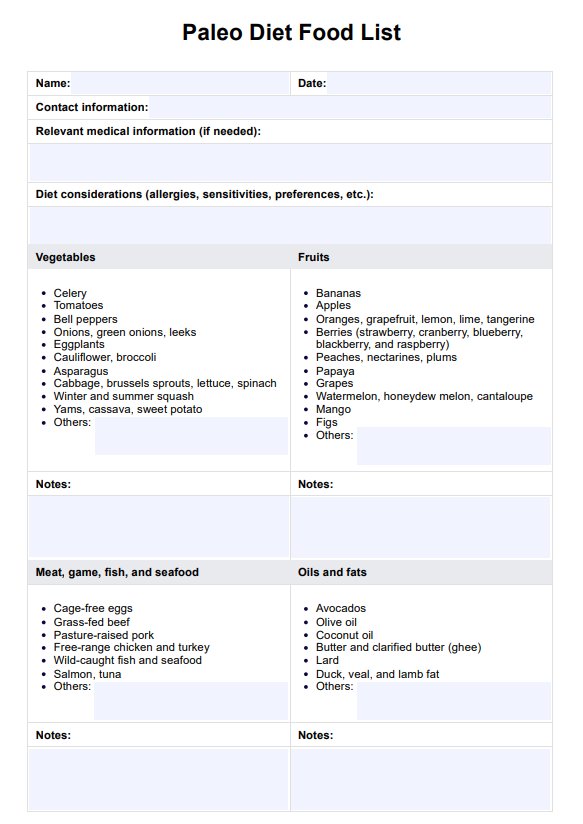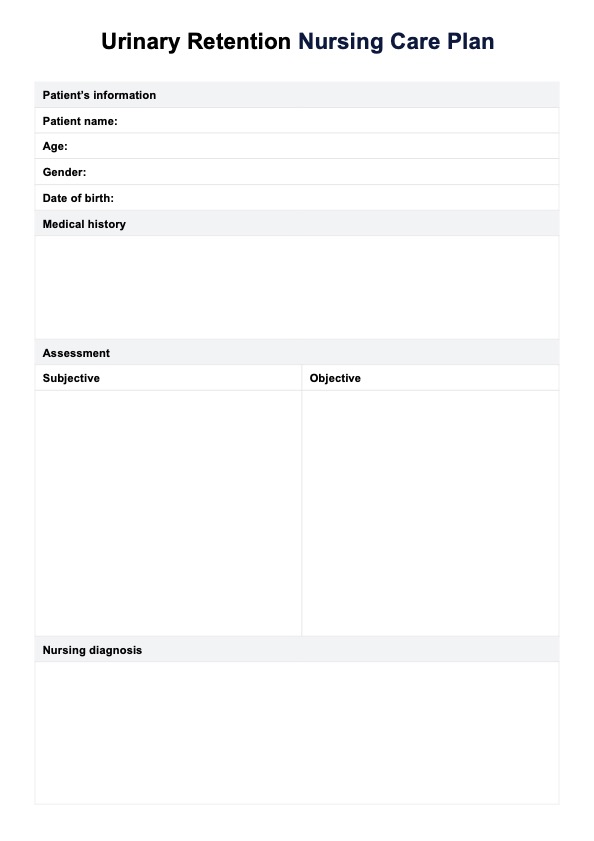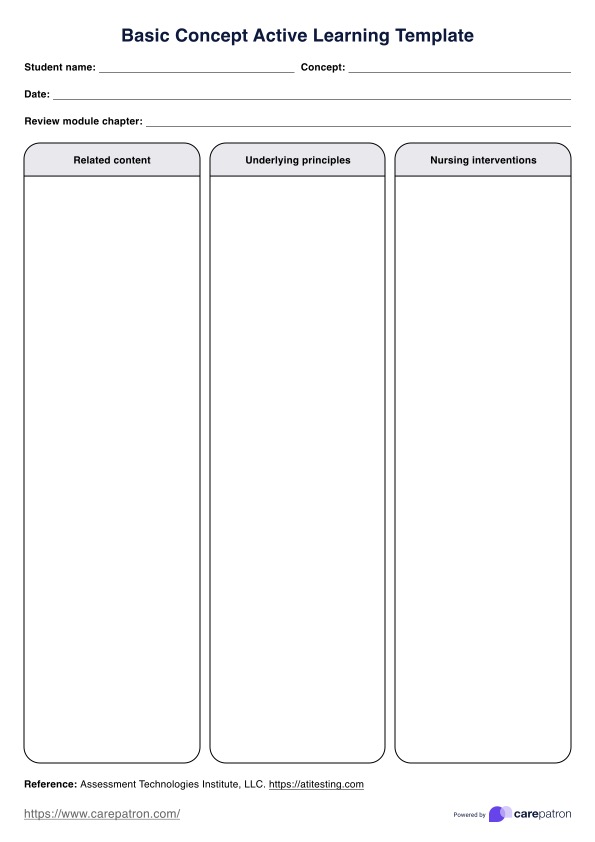Food and Symptom Diary PDF
Track your food intake and symptoms on a symptom-free day with our convenient Food and Symptom Diary PDF report. Monitor your health quickly and effectively.


What is a food and symptom diary?
A food and symptom diary is crucial for tracking dietary intake and associated symptoms. It is a record-keeping document where individuals jot down what they eat and any symptoms experienced afterward. This process aids in identifying trigger foods, especially for those with food intolerances or digestive conditions such as irritable bowel syndrome (IBS), inflammatory bowel disease (IBD), or small intestinal bacterial overgrowth (SIBO).
The symptom diary typically comes in various formats, including PDFs, making it easy to download and print or use digitally. Users can track their meals and bowel movements, specific symptoms, and environmental factors that may influence their digestive health. This symptom diary provides valuable insights into the relationship between diet and symptoms, helping individuals and licensed health professionals identify trigger foods or problematic patterns (Hennessy, 2021).
Diary analysis reveals correlations between certain foods or groups and specific health circumstances. Through meticulous tracking, users can identify suspect foods and explore tailored approaches like the elimination or specialized diets like the low-FODMAP diet. Flexibility is critical, allowing individuals to adapt the diary to their unique needs and preferences, including adding custom symptoms or tracking favorite foods.
The diary's utility extends beyond digestive conditions; it can also aid in managing other health issues like cluster headaches or overall well-being. Users gain insights and a comprehensive overview of their health by recording symptoms and dietary intake. They can share detailed reports, often generated as PDFs, with their support team or licensed health professionals for further analysis (Health Link BC, 2014).
Using statistical methods, the symptom diary easy helps users understand correlations and patterns, empowering them to make informed decisions about their diet and lifestyle. Whether aiming for a symptom-free day or seeking to improve overall health, the food and symptom diary is a valuable tool in promoting digestive health and well-being (University Hospitals Plymouth NHS Trust, 2022).
Food and Symptom Diary PDF Template
Food and Symptom Diary PDF Example
How to use this template?
Our Food and Symptom Diary template is designed to track everything you eat and drink and any symptoms you experience for the day. Here's how to use it:
Our Food and Symptom Diary template is designed to help medical professionals work with patients to track their dietary intake and any associated symptoms. Here's how you can use this template effectively:
Step 1: Download the template
Access and download the Food and Symptom Diary template from Carepatron's Resource Library or app. The PDF is printable, and if you are already a Carepatron user, you can customize the template or share it with patients and other healthcare professionals via the app.
Step 2: Explain the template to the patient
Introduce the diary to your patient, explaining its purpose and how it can assist in identifying potential food triggers or patterns related to their symptoms. Provide guidance on filling in their personal details, such as name, address, and date of birth, at the beginning of the diary.
Step 3: Instruct the patient on daily entries
Advise your patient to record each day's date, the time they woke up, and the time they went to bed at the top of a new page. They must document every food and drink consumed throughout the day, including the amount and specific time. Emphasize the importance of being precise for accurate tracking.
In addition, ask them to note any symptoms experienced throughout the day next to their food and drink entries, such as abdominal pain, nausea, changes in bowel movements, headaches, swelling, or itching. Remind them to record any medications or supplements taken, along with the time.
Step 4: Review the diary with the patient
After the patient has completed the diary for a specified period (typically a week), schedule a follow-up appointment to review the entries together. Analyze the diary for patterns or triggers related to the patient's diet and symptoms. Discuss any findings and consider potential dietary adjustments or further investigations if needed.
Step 5: Determine next steps
Based on the diary analysis, decide on the next steps for the patient's care. This may involve dietary modifications, referrals for additional tests, or consultations with specialists.Encourage the patient to continue using the diary if it proves helpful in managing their symptoms and overall well-being.
Benefits of a food and symptom diary
Maintaining a food and symptom diary offers many benefits that contribute to better health and well-being. Firstly, it enhances memory recall and tracks food by encouraging individuals to record their food and drink intake immediately after consumption, ensuring accuracy and thoroughness in tracking dietary habits (McManus, 2019). This meticulous documentation fosters a deeper understanding of bowel health and personal eating patterns, shedding light on recurring food choices and habits that may go unnoticed.
The food and symptom diary emerges as a crucial tool for food groups and individuals grappling with gastrointestinal (GI) symptoms. It aids in identifying specific foods or beverages that exacerbate or trigger symptoms, empowering individuals to make informed dietary modifications for better symptom management (International Foundation for Gastrointestinal Disorders, 2021). This proactive approach alleviates discomfort and cultivates a sense of control over one's health.
Moreover, analyzing food and symptom diaries allows for personalized lifestyle recommendations, which is particularly valuable for individuals with GI symptoms. By discerning patterns and correlations between dietary intake and symptom onset, healthcare professionals can offer tailored advice, enabling individuals to implement significant dietary changes to reduce symptoms and improve overall well-being.
Beyond symptom management, food journals also serve as practical tools for monitoring caloric intake and supporting weight management goals (Dicken, 2019). By tracking food consumption, individuals can identify areas for improvement and make informed choices to achieve their desired weight targets.
Furthermore, maintaining a food diary has been shown to facilitate behavior change, particularly in the context of weight loss. Studies indicate consistent food journaling correlates with tremendous weight loss success, highlighting its efficacy as a behavioral intervention tool.
In essence, a food and symptom diary is a comprehensive resource that provides insights into eating habits and facilitates the identification of trigger foods, enables personalized dietary modifications, supports weight management efforts, and promotes behavior change for improved health outcomes.
Who can benefit?
Healthcare providers who can benefit from a food and symptom diary include:
- Nutritionists and dietitians: Food and symptom diaries can help nutritionists and dietitians understand their clients' eating habits, identify problematic foods, and develop personalized dietary plans.
- Gastroenterologists: For those with gastrointestinal (GI) symptoms, a food and symptom diary can help gastroenterologists identify specific foods or drinks that trigger or worsen symptoms. This information can be used to make dietary changes and manage symptoms more effectively.
- Primary care physicians: Primary care physicians can use food and symptom diaries to understand better their patients' symptoms, mainly when food triggers them. This information can be used to make informed recommendations and referrals to specialists.
- Allergists and immunologists: Food and symptom diaries can be a valuable tool for allergists and immunologists in identifying potential food allergies or intolerances. This information can be used to develop appropriate treatment plans and manage symptoms more effectively (Allergy UK, 2021).
- Mental health professionals: Food and symptom diaries can also be helpful for mental health professionals, such as psychologists and psychiatrists, to understand the relationship between food and mood. This information can be used to develop appropriate treatment plans for conditions such as depression and anxiety.
Tips for keeping a food and symptom diary
Keeping a food and symptom diary can be incredibly helpful for identifying potential food intolerances, allergies, or triggers for various symptoms, such as other food intolerance, digestive health issues, headaches, or skin problems. Here are some tips for maintaining an adequate food and symptom diary:
- Record everything: Write down everything you eat and drink throughout the day, including portion sizes and ingredients. Also, record any symptoms you experience, such as bloating, stomach cramps, headaches, skin rashes, etc.
- Be detailed: Include as much detail as possible about your symptoms. Note the time they occur, their severity, duration, and any factors that might have influenced them (e.g., stress, lack of sleep).
- Use a rating system: Develop a rating system to quantify the severity of your symptoms. For example, you could use a scale from 1 to 10, with 1 being mild and 10 being severe.
- Include other factors: Record other relevant factors that may influence your symptoms, such as stress levels, sleep quality, exercise, and medication use.
- Be consistent: Make it a habit to record your food intake and symptoms consistently. Try to do it immediately after each meal or snack to ensure accuracy.
- Don't forget beverages: Remember to include beverages in your diary, as they can also be potential triggers for symptoms. This includes water, tea, coffee, alcohol, and any other drinks you consume.
- Be honest: Be honest and thorough in your recording. Even if you're unsure whether a particular food or drink caused a symptom, it's essential to include it in your diary.
- Look for patterns: Review your diary for patterns or correlations between your food intake and symptoms after recording a week or two. Pay attention to recurring themes or specific foods that seem to trigger symptoms.
- Consult a professional: If you notice consistent patterns or are struggling to identify triggers, consider consulting a licensed health professional prior to making any changes to your diet. A registered dietitian or allergist can help you interpret your diary and develop a plan to address your symptoms.
References
Allergy UK. (2021, July 6). Food and symptoms diary. Allergy UK | National Charity. https://www.allergyuk.org/resources/food-and-symptoms-diary/
Dicken, C. (2019, October 23). The benefits of food journaling. American Society for Nutrition. https://nutrition.org/the-benefits-of-food-journaling/
Health Link BC. (2014, May). Food and symptom journal | HealthLink BC.
Hennessy, N. (2021, November 16). Monitor your symptoms with our easy food diary. Www.bupa.co.uk. https://www.bupa.co.uk/newsroom/ourviews/monitor-symptoms-food-diary
International Foundation for Gastrointestinal Disorders. (2021, February 24). 7-day food and symptom diary - About GERD. International Foundation for Gastrointestinal Disorders. https://aboutgerd.org/treatment/diet-lifestyle-changes/7-day-food-and-symptom-diary/
Leicestershire Nutrition and Dietetic Services. (2022). Food and symptom diary. https://www.lnds.nhs.uk/Library/FoodsymptomdiaryJan22LNDS234.pdf
McManus, K. D. (2019, January 31). Why keep a food diary?. Harvard Health Blog. https://www.health.harvard.edu/blog/why-keep-a-food-diary-2019013115855
University Hospitals Plymouth NHS Trust. (2022, September). Display patient information leaflets. https://www.plymouthhospitals.nhs.uk/display-pil/pil-food-and-symptom-diary-5831/
Commonly asked questions
Most healthcare providers recommend keeping a food and symptom diary for at least 3 to 5 days, including at least one weekend day. However, some may recommend keeping a food diary for up to two weeks or longer to get a more accurate picture of dietary patterns and symptoms.
A food and symptom diary should include all food and drinks consumed, estimated quantities, and any gastrointestinal symptoms experienced. It is also essential to include brand names, cooking methods, condiments, dressings, dips, and spreads.
When recording symptoms in a food and symptom diary, it is essential to describe them accurately and score their severity using a symptom score, such as mild, moderate, severe, or severe. It is also helpful to record the time of day that symptoms occur and the time of day that food and drinks are consumed.


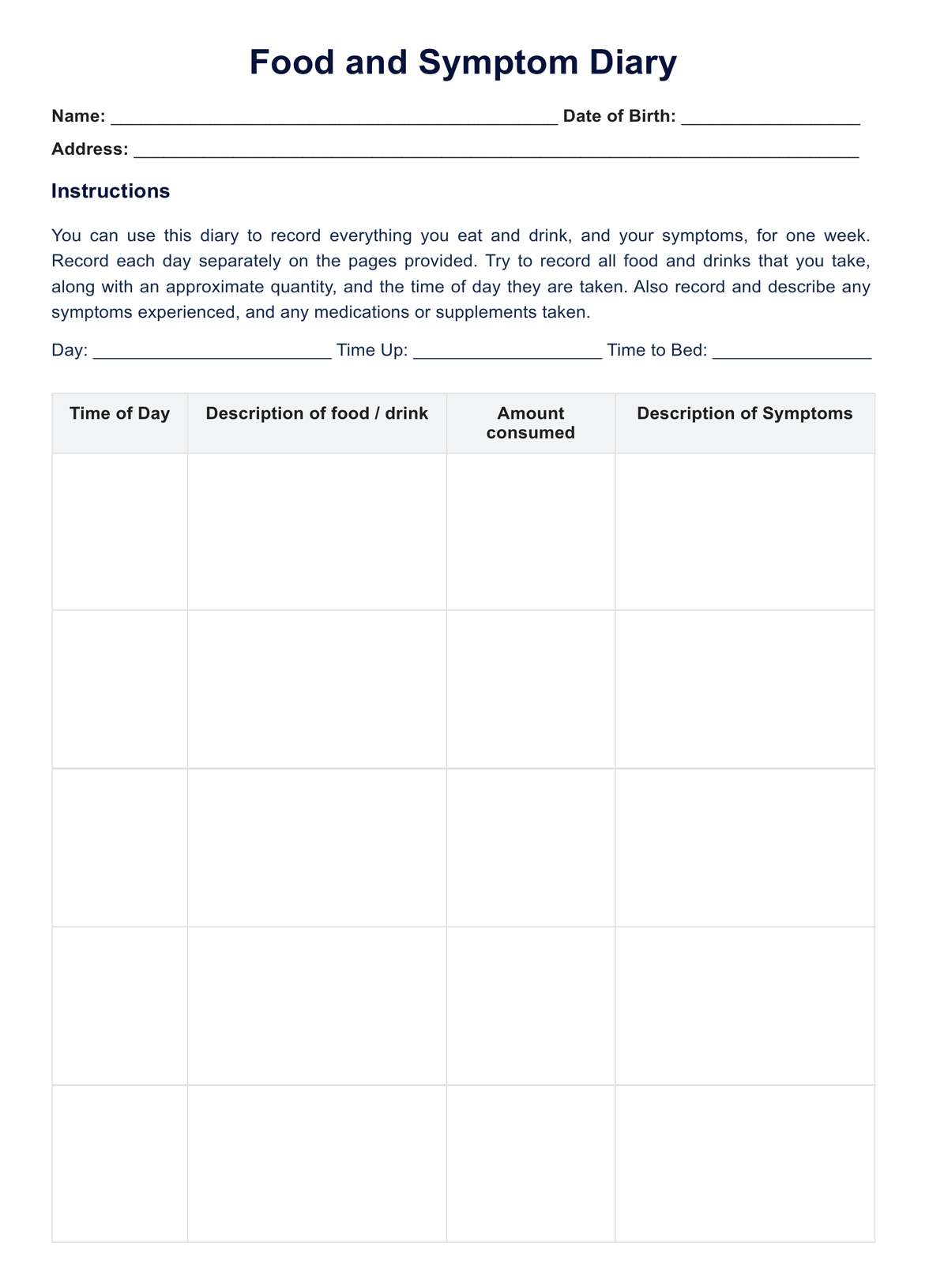
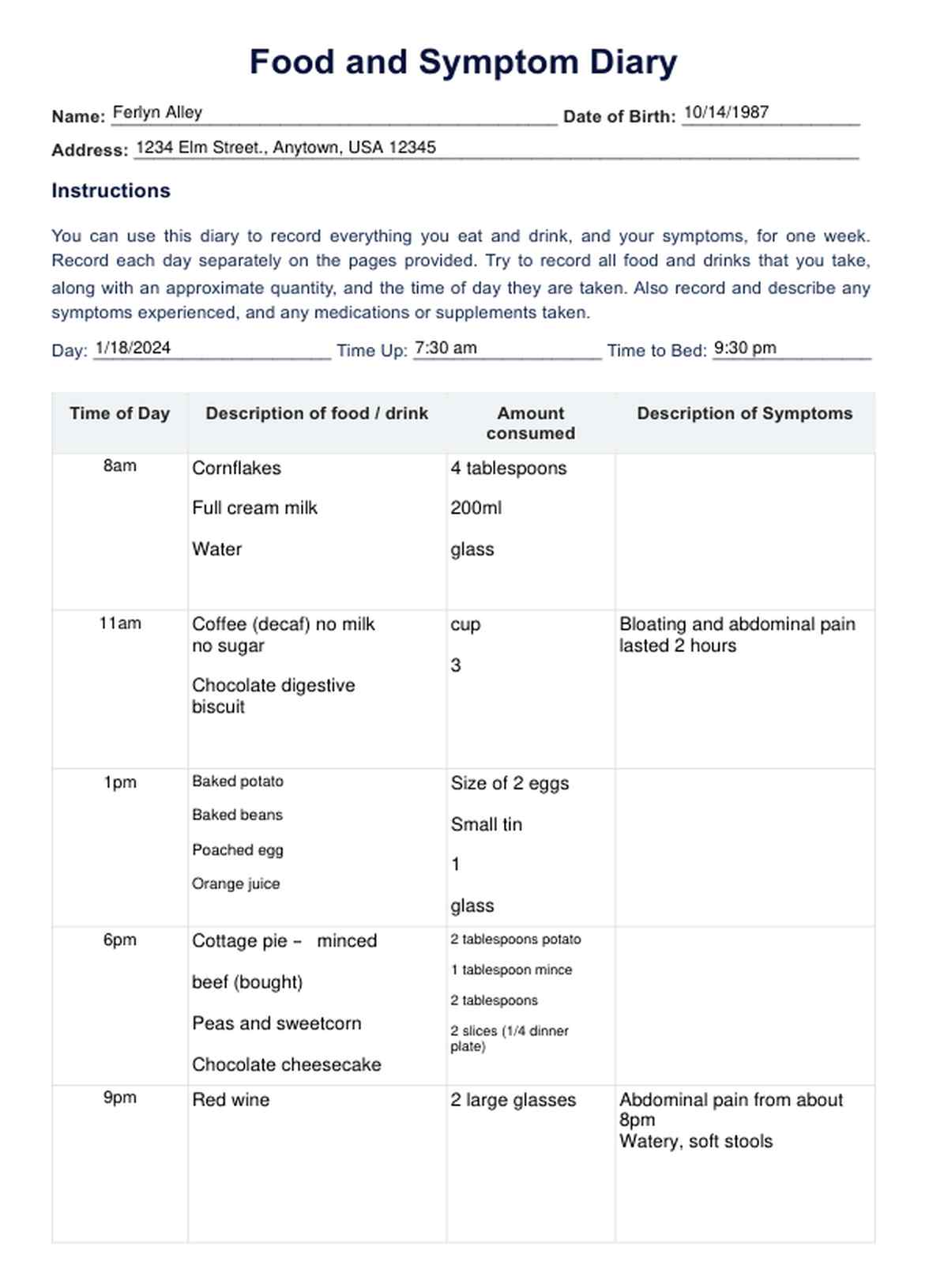



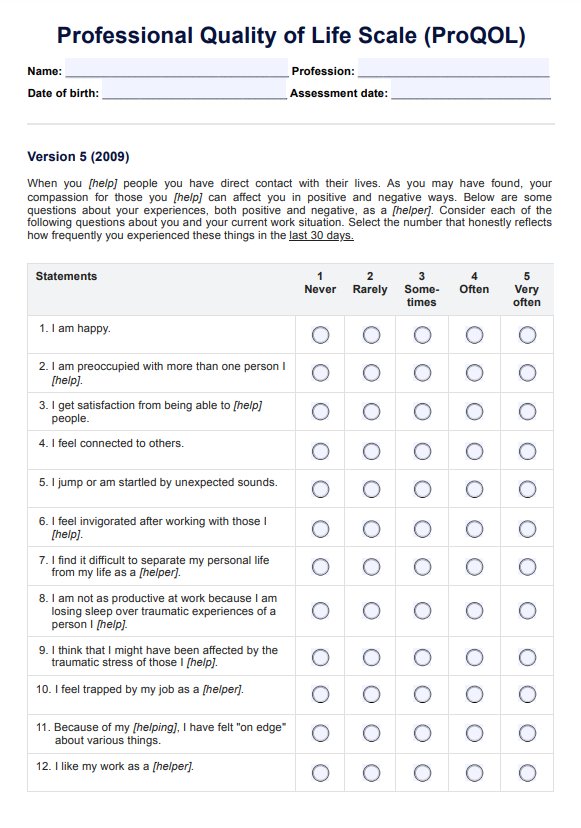












-template.jpg)












































































